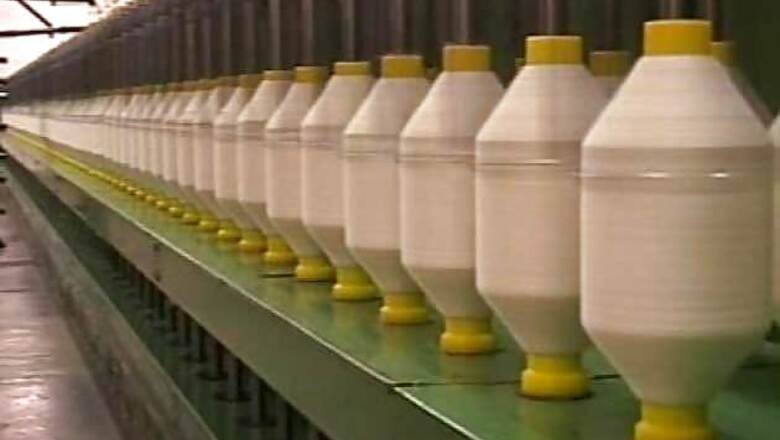
views
India's economy grew at its slowest pace in more than two years during the final months of 2011 as high interest rates and booming input costs hampered manufacturing activity, a Reuters poll predicted. Gross domestic product in Asia's third-largest economy grew at an annual 6.4% in the quarter to end-December, according to the poll of 26 economists. Forecasts ranged from 6.0 to 7.3% with a majority of them lying below the consensus.
That would be a significant slowdown from 6.9% in the previous quarter and would mark the fourth straight quarter of growth below 8%. Only two economists expect growth above the previous reading. India's economy has been sluggish, with growth slowing to 7.7% in the April-June quarter and further to 6.9% in July-September.
"The rate-sensitive sectors such as industrials, construction and mining are so badly affected due to tight monetary conditions that the overall growth number is expected to turn weak," said Siddhartha Sanyal of Barclays Capital. "At the moment the kind of macro headwinds we're facing both on the domestic and external front makes 8% growth seem distant," he said.
The story is similar for China, where the economy grew at its weakest pace in 2-1/2 years in the same period, at an 8.9%, as it struggles with sagging real estate and export growth.
While the low growth rates in Asia's powerhouses are better than the feeble-to-no-growth in developed nations, there is a growing sense of pessimism India and China lack the momentum to support the faltering global economy.
As China faces plunging property investment and dwindling exports to its largest market, Europe, which is ensnared in a debt crisis, India is grappling with slowing factory activity, high inflation and tight monetary conditions.
Manufacturing, which accounts for approximately 15% of India's GDP, was likely to be the biggest drag even as farming and services provided some support to the economy.
Between October and December last year, year-on-year growth in industrial output roughly halved in comparison to the previous quarter, as capital investment remained weak. Output from India's factories, mines and utilities increased 1.8% from a year earlier, the slowest since October.
"Growth in industrial production and investments are not good enough to support the overall GDP number," said Arun Singh, senior economist at Dun & Bradstreet.
The Reserve Bank of India (RBI) hiked interest rates 13 times over two years to fight stubbornly high inflation, but that aggressive policy tightening has reduced investment activity and hurt industrial growth.
The RBI surprised markets last month with an about-turn and cut its cash reserve ratio by 50 basis points to try and infuse liquidity into markets. If the central bank eases policy further, as expected, analysts predict a revival in economic output.
Still, some economists say the outlook for India is brightening, unlike China, where it remains subdued for the first quarter of this year.
Manufacturing activity grew at its fastest pace in eight months during January while services business grew at its fastest pace since July 2011, business surveys showed this month.
"Everything negative that could have happened did happen during the period," said Bhupesh Bameta at Quant Capital. "From here on we will see an improvement."
















Comments
0 comment